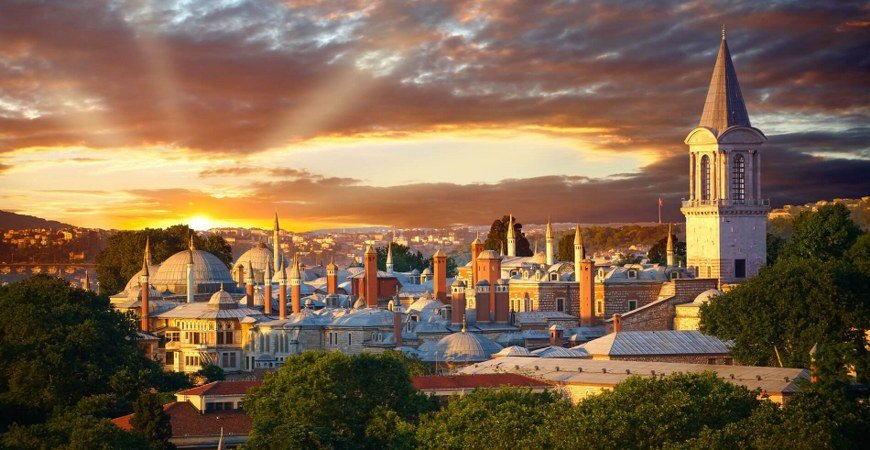
Section of Calligraphy, Illumination and Miniatures of Topkapi Palace
Section of Calligraphy, Illumination, and Miniatures of Topkapi Palace,
Part of this building occupies the site of the Conqueror’s magnificent bathhouse. Under Ahmet III a broad-leaved building was built here to house the Campaigners Ward. This was pulled down under Abdul Alma, and the present stone building erected in its place. This building was for the use of the servants who waited upon the sultan during military campaigns, as well as for the turban-winders, laundrymen, and barbers who served him in peacetime. During the reign of Sultan Mehmet V one floor was taken out and a number of Chinese porcelains exhibited here. When the Saray became a museum the porcelain was re-classified, and after the restoration of the kitchens moved to the more suitable premises there. The collection on show in this building starts with a manuscript written on papyrus and bearing the date 708. This is followed by the works of Ibn-i-Bevap, Yakutel Mustahsani and their disciples, On the wall to the right and in a showcase in front of it can be seen beautiful examples of the calligraphy of Seyil Hamdullah of Amasya (1436 – 1520) who brought about an in this art. This is followed by exhibits of the work of Mustafa Dode (Seyh Hamdullah’s disciple), Karahisari, Mehmet Rasim, Dervish Ali, Mahmut Celaleddin, Kazasker Mustafa Izzet, Shefik and Mustafa Shevki, each of whom had his school of followers, down to the last Master of Calligraphy, Kamil Akdik. For examples of the Persian style of calligraphy, there are the works of Yesari and of other masters. There are also examples of Guidry calligraphy and of carved lettering, arranged in chronological order. In the left wing, each a work of art in itself, are ranged the tundra (monograms used as seals) of the sultans, from Orhan to Mehmet VI, with the sole exception of Bayezit the Thunderbolt. On the wall opposite are scrolls bearing the handwriting of various sultans and in front of this an exhibit of the differ-ent implements used in calligraphy pen and ink cases, inkstands, pen rests, rulers and scissors On the right-hand side of the hall is a chronological display of lacquered and ornamented bookbindings, beginning with Seljuks. On the left-hand side, there is an enormous collection of Turkish miniatures, from the thirteenth to the eighteenth centuries. In the second hall, we find Persian calligraphy, illuminations and miniatures, as well as Cufic, Moroccan and Mameluk calligraphy and Indian miniatures. In both wings of this hall are to be found doors, reading desks and other objects illustrating the woodcarving and mother-of-pearl inlay work of the fifteenth to the nineteenth centuries. The works displayed in this hall from one of the rarest and largest collections of its kind in the world. Yet they have been selected from among thousands more, which are kept in the Saray Library.